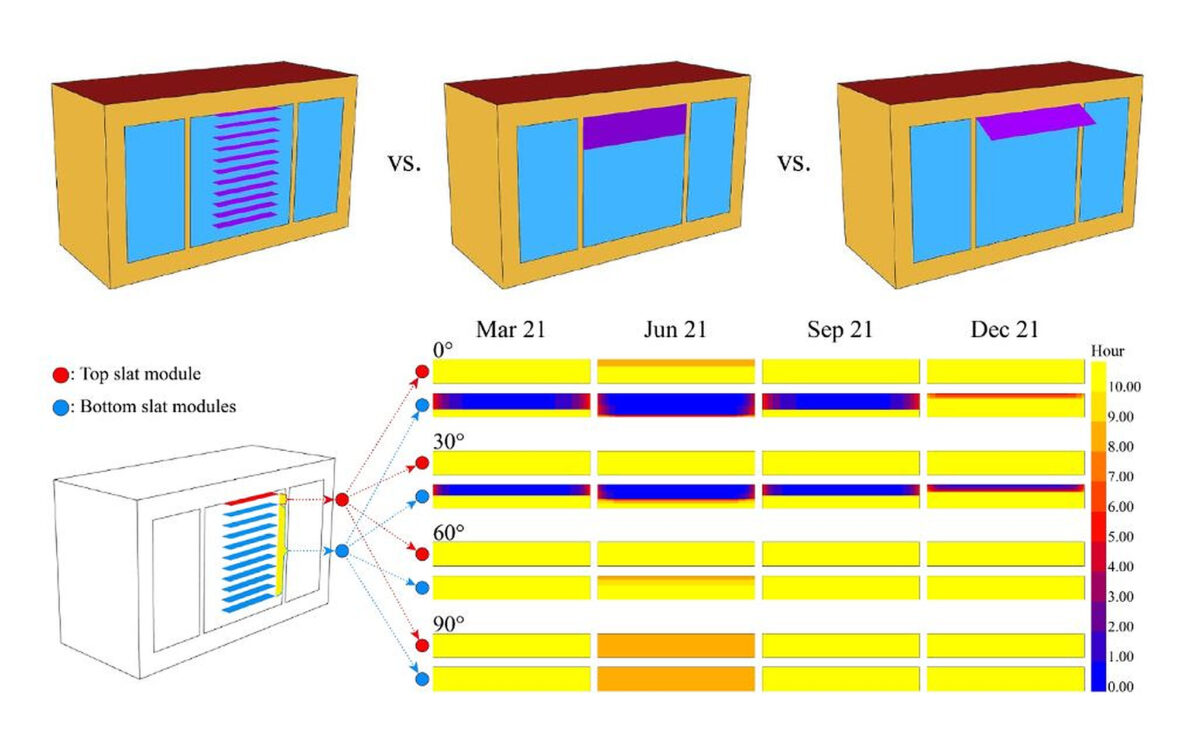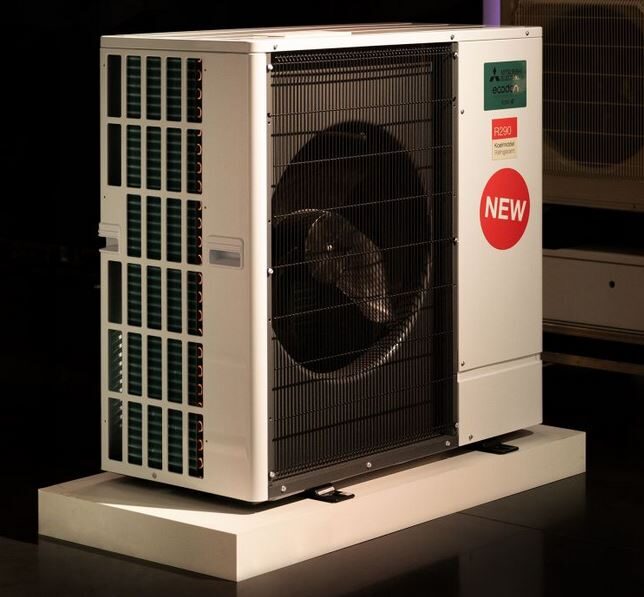Scientists at the Hanbat National University in South Korea investigated how the performance of building-integrated photovoltaic (BIPV) blinds is affected by the shade produced by the blind slats themselves and have found that a tilt angle of 90 degrees may strongly reduce this effect.
“What distinguishes this research is its emphasis on shading effects in the context of PV blinds, a factor often overlooked,” the research's corresponding author, Jongho Yoon, told pv magazine. “Despite the general praise for PV blinds' ability to potentially generate more power than fixed PV modules due to their adjustable angles, the study draws attention to the substantial operational performance reduction that can occur due to shading effects between, above, and below blind slats.”
The researchers compared the performance of a PV blind with a fixed angle operating under vertical and inclined conditions under vertical and inclined conditions to the performance of a fixed angle reference BIPV module. They used both an experimental field facility and a simulation model to represent real-world scenarios.
“To measure the irradiation delivered to the installed module, three pyranometers were installed on 30 degrees, 90 degrees, and 0 degrees for inclined, vertical, and horizontal planes, respectively,” the scientists specified.
The researchers discovered that except for a 90-degree angle setting, the PV blinds persistently generated less power yield than the reference module at alternate angles. Normally, the optimal angle for PV systems in Korea is 30 degrees.
“Intriguingly, the PV blinds produced peak power at this 30 degrees angle, but a significant discrepancy in power yield compared to the reference module was also noted,” Yoon explained. “This indicates that an elevated power yield produces more pronounced self-shading effects in PV blinds.”
The scientists compared the power yield of PV blinds at their monthly optimal angles with the fixed reference module set at 30 degrees or 90 degrees. The PV blinds outperformed the reference module fixed at a 90-degree angle, yet their power yield was 13 to 21% less than at a 30-degree angle.
“These findings suggest that adjusting the angle of PV blinds could enhance power generation efficiency, albeit limitations existed due to the self-shading effects instigated by the upper slat module,” the scientists emphasized.
The research group also examined scenarios wherein users might incorrectly set the angle of PV blinds. They compared the power yield of PV blinds set at their least optimal angles each month with the reference slat module fixed at either 30 degrees or 90 degrees. It found pronounced differences in power generation performance. The reference module at 30 degrees yielded 83-86% more power than the misaligned PV blinds, whereas it generated 14-28% less power yield than the reference module fixed at 90 degrees.
“This underlined the importance of accurately setting the angle of PV blinds to maximize power generation,” the academics stated.
They presented the new concept in the study “Power performance assessment of PV blinds system considering self-shading effects,” published in Solar Energy.
“It's important to note that the results did not consider the effects of series-parallel connections between slat modules and bypass diodes,” Yoon said referring to the future directions of the research. “Therefore, incorporating these factors under real-world conditions may potentially decrease the power generation efficiency of PV blinds.”
This content is protected by copyright and may not be reused. If you want to cooperate with us and would like to reuse some of our content, please contact: editors@pv-magazine.com.




2 comments
By submitting this form you agree to pv magazine using your data for the purposes of publishing your comment.
Your personal data will only be disclosed or otherwise transmitted to third parties for the purposes of spam filtering or if this is necessary for technical maintenance of the website. Any other transfer to third parties will not take place unless this is justified on the basis of applicable data protection regulations or if pv magazine is legally obliged to do so.
You may revoke this consent at any time with effect for the future, in which case your personal data will be deleted immediately. Otherwise, your data will be deleted if pv magazine has processed your request or the purpose of data storage is fulfilled.
Further information on data privacy can be found in our Data Protection Policy.